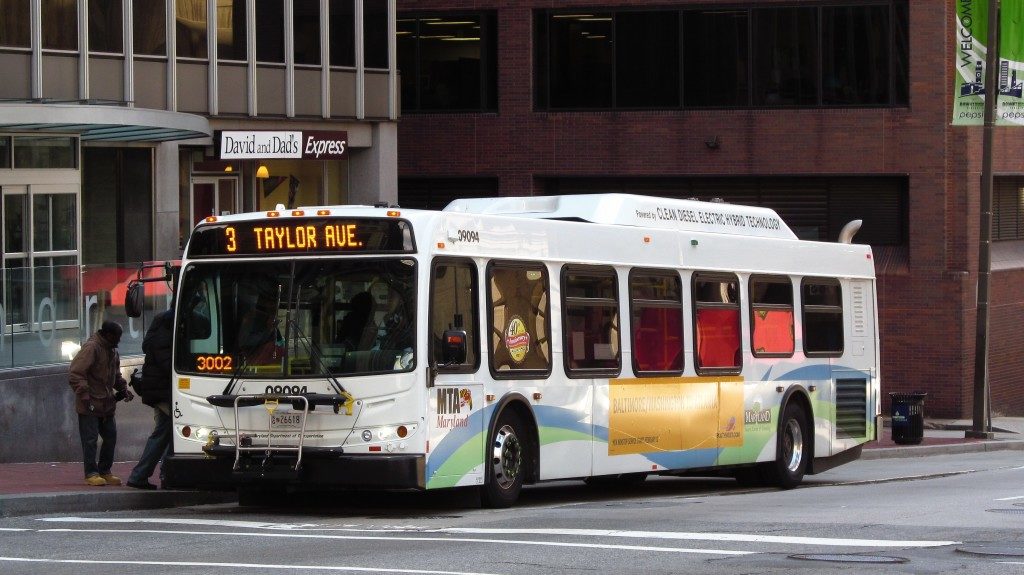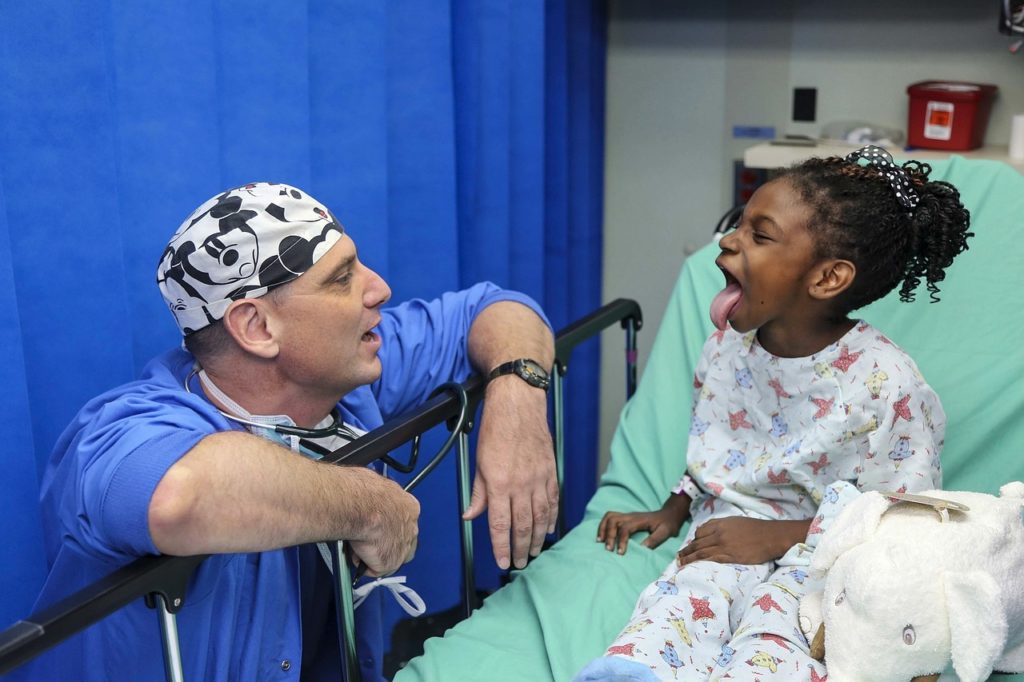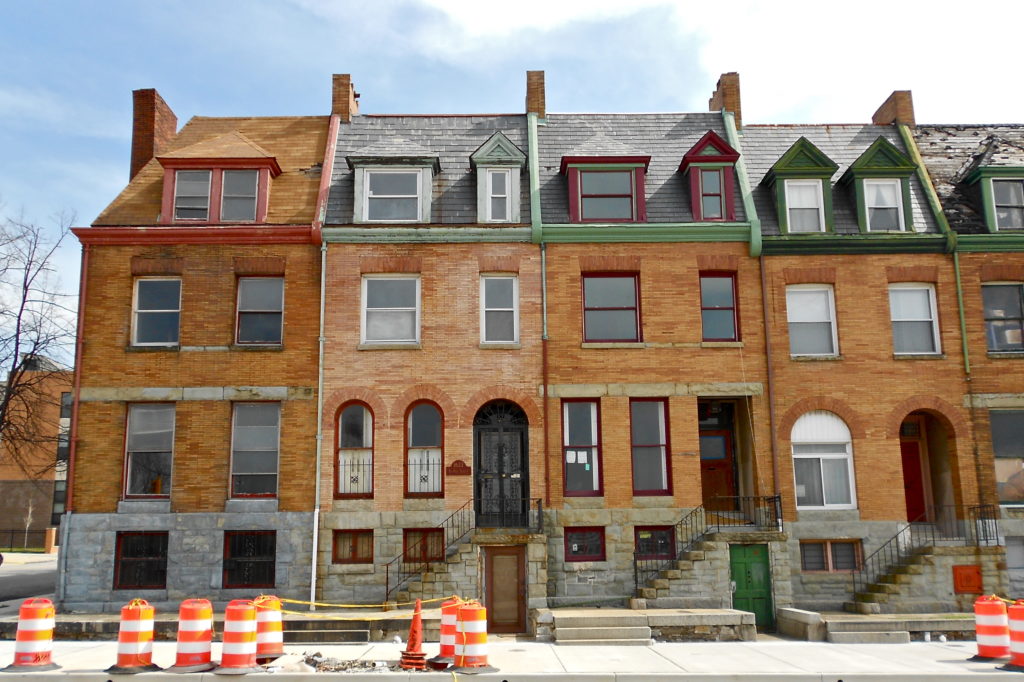Budget First Look: Governor’s Proposed 2019 Budget Makes Few New Investments
Last week, Gov. Larry Hogan released his proposed budget for the next fiscal year, which begins July 1. As a whole, the governor’s budget maintains the status quo for many core services, without significant new investments that could address unmet needs or move our state forward. As he did last year, the governor attempts to cut back on investment in new priorities the legislature has set in recent years, such as recruiting and retaining good teachers and increasing reimbursement rates for behavioral health providers to ensure people can access mental health and substance use treatment.
The legislature will consider the governor’s budget over the coming weeks. While they have some ability to reject proposed cuts in spending that is mandated by state law and move funding around, they cannot add funding to the budget. And whatever they do, the approved budget must be balanced.
Pre-K-12 Education
State aid to public schools increases by $139 million or 2.5 percent compared to the current fiscal year, while total student enrollment increased by 1.0 percent. Local school systems receive increases in state aid ranging from 0.1 percent in Calvert, Carroll, and Cecil counties to 6.9 percent in Charles County. While the budget does fully fund the state’s education aid formula, there is growing evidence that this formula is not enough to meet Maryland students’ needs. State and local school funding were about $1 billion below the amount the state considers “adequate” in the 2014–2015 school year, thanks to a series of cuts made after the Great Recession. What’s more, a consultant group hired by the state estimates that as much as $3 billion per year in additional funding is needed to ensure students achieve the state’s higher-than-ever academic standards. This budget’s business-as-usual approach to education funding is likely to continue leaving thousands of Maryland students behind.
While the governor funds basic school aid according to the state’s formula, he cuts more than $19 million from other investments in education. These cuts continue the pattern set in last year’s budget, when the governor cut $23 million in education funding that the legislature later partially restored.
- The budget cuts $5 million in mandated funding from the Public Schools Opportunities Enhancement Program, which funds extended day and summer programming in schools across Maryland that face some of the greatest challenges.
- The budget zeroes out the Next Generation Scholars program, which funds efforts by nonprofit organizations to increase college attendance among low-income high school students.
- The budget cuts $9 million from programs to help the state recruit and retain high-quality teachers. These cuts come at a time when all 24 of the state’s school systems face a critical shortage of teachers and Maryland falls in the bottom ten states for adequate teacher supply.
- The budget zeroes out mandated funding for robotics education.
The budget anticipates $36 million in reduced federal education aid compared to the current year. This includes cuts to Title I funding for schools serving many low-income families, federal funding for students who receive special education services, and school meals.
While public schools account for the majority of the State Department of Education budget, other services receive significant changes in funding as well.
- Education funding for children who are incarcerated by the Department of Juvenile Services increases by $1 million or about 5 percent. However, the budget reduces staffing for these services by four full-time equivalent positions.
- Funding for BOOST, which provides publicly funded vouchers for private schools, increases by $3.4 million or 61 percent. Data show that these vouchers primarily benefit existing private school students rather than increasing access to these schools. Advocates are also concerned that the program reduces support for public schools.
- The Division of Rehabilitation Services, which provides employment-related services to Marylanders with disabilities, increases by $1.6 million or 1.3 percent. This increase is driven primarily by federal funding.
- The state expects to lose $10 million in federal funding for child care subsidies, or about 10 percent of total funding. At the same time, the administration claims it will be able to eliminate the waiting list for these services and increase provider reimbursements using prior-year funding that was not spent. The state’s current provider reimbursement rate is so low that parents who rely on the subsidy to afford care for their children have little access to most childcare facilities. It also does not meet federal standards for reimbursement rates.
Funding for school construction increases by $3.1 million or 0.9 percent compared to the current year. This includes $360 million in total borrowing and $4.9 million in general funds. While this modest increase is welcome, the state’s performance data show that a stronger investment is needed to ensure all Maryland children have access to high-quality school facilities. Fourteen of the state’s 24 school systems saw the average age of their schools (weighted by square footage) increase from fiscal year 2016 to 2017, and schools in all but one school system were older on average in 2017 than five years earlier. In the most recent data, public schools range from 17 years old on average in Howard and Talbot counties to 42 years old in Baltimore City.

Photo by Sakeeb Sabakka via Creative Commons
Higher Education
The budget increases state funding for public four-year universities by $24.4 million or 1.7 percent. This includes $6 million in cuts to funding called for in current law. For instance, the Governor’s proposed budget cuts $2 million from the Center for Entrepreneurship Development at the University of Maryland–College Park and $4 million from general funding for the University of Maryland–Baltimore County. State funding for community colleges increases by $4.4 million or 1.5 percent. This includes an $851,000 cut to Baltimore City Community College if the legislature follows the governor’s recommendation to change the college’s funding formula. This cut would bring total state funding for BCCC to $803,000 less than this year’s state funding.
Several other components of state funding for higher education change significantly in the governor’s budget:
- The budget flat-funds the Sellinger formula, which provides state funding to private colleges and universities. This represents a $7.4 million cut from the amount called for in current law.
- The budget cuts matching funds for low- and middle-income families who save for college by $5 million.
- The budget reduces borrowing authority for capital projects at public colleges and universities by about $46 million. This includes a 5 percent increase in capital funding for community colleges and a 15 percent cut to capital funding for four-year institutions
Transportation
About 12 percent of the state budget goes to the state’s transportation needs, building and maintaining roads, bridges, mass transit networks, mobility services, the Port of Baltimore, BWI Thurgood Marshall Airport, as well as various small airports. The governor’s proposed budget includes $2.7 billion in capital spending on new transportation projects to improve the state’s infrastructure and promote economic development.
On a regional basis, the major transportation projects budget allocations include $169 million in the Washington, D.C., region (44 percent of the transportation budget), $106 million for Baltimore City (27 percent), $50 million for Western Maryland (13 percent), $34 million for the Eastern Shore (9 percent), and $26.5 million for Southern Maryland (7 percent).
The transit budget includes $335 million for the Purple Line light rail system in Montgomery and Prince George’s counties and $37 million for MARC commuter rail improvements on the Camden, Brunswick and Penn lines. The governor’s budget does not appear to include additional funding for the Metrorail service. The General Assembly will be considering legislation to increase Metro funding as part of a regional effort to address the transit system’s maintenance problems.
Health Care
Medicaid is the largest piece of the state’s investment in health care, and an essential one. Nearly 1.4 million Marylanders are able to access health care thanks to Medicaid. This week’s vote in Congress to extend funding for the Children’s Health Insurance Program takes significant pressure off the state. Without it, state policymakers would have had to identify about $125 million to maintain health coverage for 147,000 children.
While the governor’s budget does provide increased funding for Medicaid, there are a few areas where the administration is looking to cut back investments in our health care system. The most significant cut is to the reimbursement rates for providers that serve people with behavioral health care needs, people with developmental disabilities, nursing home residents, and other service providers. The General Assembly has passed legislation in recent years to require 3.5 percent annual increases in provider rates, in part to make up for prior years when reimbursement rates stayed flat. Maintaining adequate reimbursement rates is essential to ensure providers, whose cost of doing business generally rises with inflation, can afford to continue to see clients who rely on Medicaid for their health coverage.
The governor also plans to save about $47 million in state Medicaid costs through an effort to ensure enrollees are eligible for the program. As the program already has strict eligibility guidelines, this could turn out to be overly optimistic or, depending on the methods used, it could lead to people incorrectly losing access to their health care because they make a paperwork error.
Other proposed changes:
- Keeping support for local health departments flat, which means counties may need to identify additional local funds or cut services, as their expenses increase.
- Once again delaying promised funding to support the new hospital in Prince George’s County
- Making it easier to use money in certain special funds for other purposes
Human Services
Overall funding for the state’s human services programs does not change significantly. The governor’s budget includes a much-needed, modest increase in the monthly benefit amounts for Temporary Assistance for Needy Families (TANF) and Temporary Disability Assistance Program (TDAP) recipients. Despite the increase, the funds budgeted for both programs in FY 2019 are less than previous years, due to anticipated declines in enrollment.
Maryland’s energy assistance program was threatened with a cut, as the Regional Greenhouse Gas Initiative, which funds the program, collected less money than predicted. However, the governor’s budget makes up the difference with general funds to maintain energy assistance for low income Marylanders.
Maryland Market Money, which provides matching funds for Supplemental Nutrition Assistance Program (SNAP) recipients who use their benefits at farmers markets, did not receive funding in the governor’s budget. If the program was funded, it would help low-income families stretch their food assistance further and access nutritious local produce and also generates additional revenue for Maryland’s agriculture industry and support farmers markets in communities with little access to fresh food.
Within the human services section, and not acknowledged by the governor’s budget, there is also a need to insulate against potential federal cuts. Funding for programs such as SNAP and TANF may be in serious jeopardy following costly federal tax cuts for corporations and the wealthy. The state will need to find additional funds to offset federal cuts and protect the tens of thousands of Maryland families who need those programs to support themselves.
Housing and Community Development
Total investments in housing and community development are down by $1 million or 0.2 percent from the current fiscal year. Like last year, the governor is shifting the state’s capital investment in housing and community development from current funds to bonds. In combination with an unnecessarily restrictive $995 million cap on total borrowing, this decision leaves fewer resources to invest in other needs like technology upgrades and public university facilities.
The largest change in this year’s Department of Housing and Community Development budget is the deletion of $14 million in new investments in the Division of Neighborhood Revitalization called for under current law. The legislature mandated these investments as part of a 2016 aid package for Baltimore City and other areas of the state facing economic challenges.
- The governor cuts $9 million from the Baltimore Regional Neighborhood Initiative, which aims to increase the tax base and quality of life in Baltimore City through coordinated investments in targeted neighborhoods. This cut reduces the initiative’s capital funding by more than half compared to the current fiscal year.
- The governor cuts $5 million from the Seed Community Development Anchor Institution Fund. The purpose of this fund is to provide loans for major institutions like universities and hospitals that can create jobs and growth in struggling areas. This is the second budget that does not allocate any money to the fund.
The budget also cuts $7.2 million from Housing and Building Energy Programs, which provide grants and loans to fund home energy efficiency improvements, especially for low-income households. These programs’ operating funding is cut by more than a quarter, while capital funding is cut by about 5 percent.
Two programs within DHCD receive significant increases in state funding:
- The budget authorizes $4.4 million in increased borrowing for homeownership programs, which provide subsidized mortgages to low- and moderate-income homebuyers. This program’s borrowing authority is increased by nearly 50 percent compared to the current year.
- The budget authorizes $2.9 million in increased borrowing for the Strategic Demolition Fund, as required by 2016 legislation.
Economic Development
As in past years, Gov. Hogan is calling for a large increase in funding for economic development programs. Unfortunately, a large portion of this money goes to programs like the Enterprise Zone Tax Credit that have been shown to be ineffective and to giveaways to giant corporations like Northrup Grumman and Marriott. As more evidence piles up that we are underinvesting in the foundations of Maryland’s economy—and as more threats to federal investments in Maryland materialize—it doesn’t make sense to put more money into programs that have little record of success.
The Department of Commerce, the agency responsible for most of the state’s economic development programs, receives an additional $25 million in funding compared to the current year—a 20 percent increase. While the department’s total funding is similar to its level in fiscal year 2017, the composition of this funding has changed significantly.
- The budget calls for an additional $5 million or 25 percent in funding for the Maryland Economic Development Assistance Authority and Fund, after the governor failed to secure a large increase last year.
- The budget includes $10 million in funding for new tax credits created by last year’s More Jobs for Marylanders Act. All evidence from existing tax credit programs suggests that this money will do little to increase economic activity.
- A few programs within the Commerce Department receive less funding, such as the Maryland Small Business Development Financing Authority. The Small, Minority, and Women-Owned Business Investment Account does not receive any funding—the same as in the current year—because the legislature last year moved the gaming revenues that support this fund into education.
Among the biggest-ticket items in this year’s economic development budget are payments intended to attract or retain large businesses in Maryland. These include the final $5 million payment to Northrop Grumman, the first of a series of $5 million payments to Marriott, and $10 million set aside for a possible deal to bring Amazon’s second headquarters to Montgomery County. These payments are certainly nice for corporate shareholders—many of whom live and spend their money in other states—but they do less to help our economy than basic investments in things like schools, hospitals, and roads right here in Maryland.
The budget also allocates $25.5 million to the Enterprise Zone Tax Credit, a $1 million increase over the current year. It makes little sense to put even more money into this program years after state analysts concluded that it contributes little to economic growth.
State Employees
More than 80,000 people work for state agencies, operating our universities, court system, human services programs, and much more. The good news for state employees is that they will get a 2 percent cost-of-living raise next January, with the opportunity for slightly more next April 2019 if revenues come in higher than expected.
However, their workloads might not get any lighter. The governor’s budget does not appear to address a recent state analysis that showed that some state agencies are severely understaffed. That analysis said the state needs to fill about 1,200 approved but vacant positions and add about 1,300 additional positions to meet staffing needs. Inadequate pay was cited as one of the reasons the state is having trouble filling positions, and the budget does include $7 million to improve retention of correctional officers. However, the proposed budget also eliminates hundreds of positions that are currently vacant, rather than planning to fill them.
The governor’s budget also does not include a required $50 million extra contribution to the state’s pension fund. The state also did not make that payment in the current year’s budget.
Environment
Environmental programs fare well overall in the governor’s budget. Most programs are fully funded, such as the Chesapeake and Atlantic Coastal Bays 2010 Trust Fund and the Maryland Park Service, but some programs funded through the capital budget received significant cuts, such as the Oyster Restoration Program.
Environmental programs that receive federal funds are still potentially threatened if Congress makes significant budget cuts this year. Federal cuts could lead directly to job losses, as well as harm the economy and quality of life in Maryland. Industries such as fishing and crabbing, tourism, and hospitality would suffer as environmental degradation builds.
Public Safety
As Maryland’s prison population declines, costs for public safety are declining and the state is able to make new investments in programs that help keep people out of the prison system and help formerly incarcerated individuals successfully return to their communities. Governor Hogan’s proposed $2.2 billion public safety budget is 2 percent less than the current fiscal year’s allocation. For the first time since 1992, the correctional population is projected to fall below 19,000.
In line with the goals of the 2016 Justice Reinvestment Act, an additional $1.2 million is provided to establish a new Community Adult Rehabilitation Center, expanding community assistance, substance abuse programs, rehabilitative services, and job readiness training for individuals returning to their communities. The Justice Reinvestment Act aims to reduce the state prison population by changing strict sentencing guidelines, increasing the number of nonviolent crimes that can be removed from a person’s record, and investing the savings from a smaller prison population into more effective crime prevention efforts.
The budget also adds funding for 15 new positions to the Maryland Department of Health to assist inmates in applying for Medicaid prior to release, which ensures they are able to access the health care they need while they look for work.





